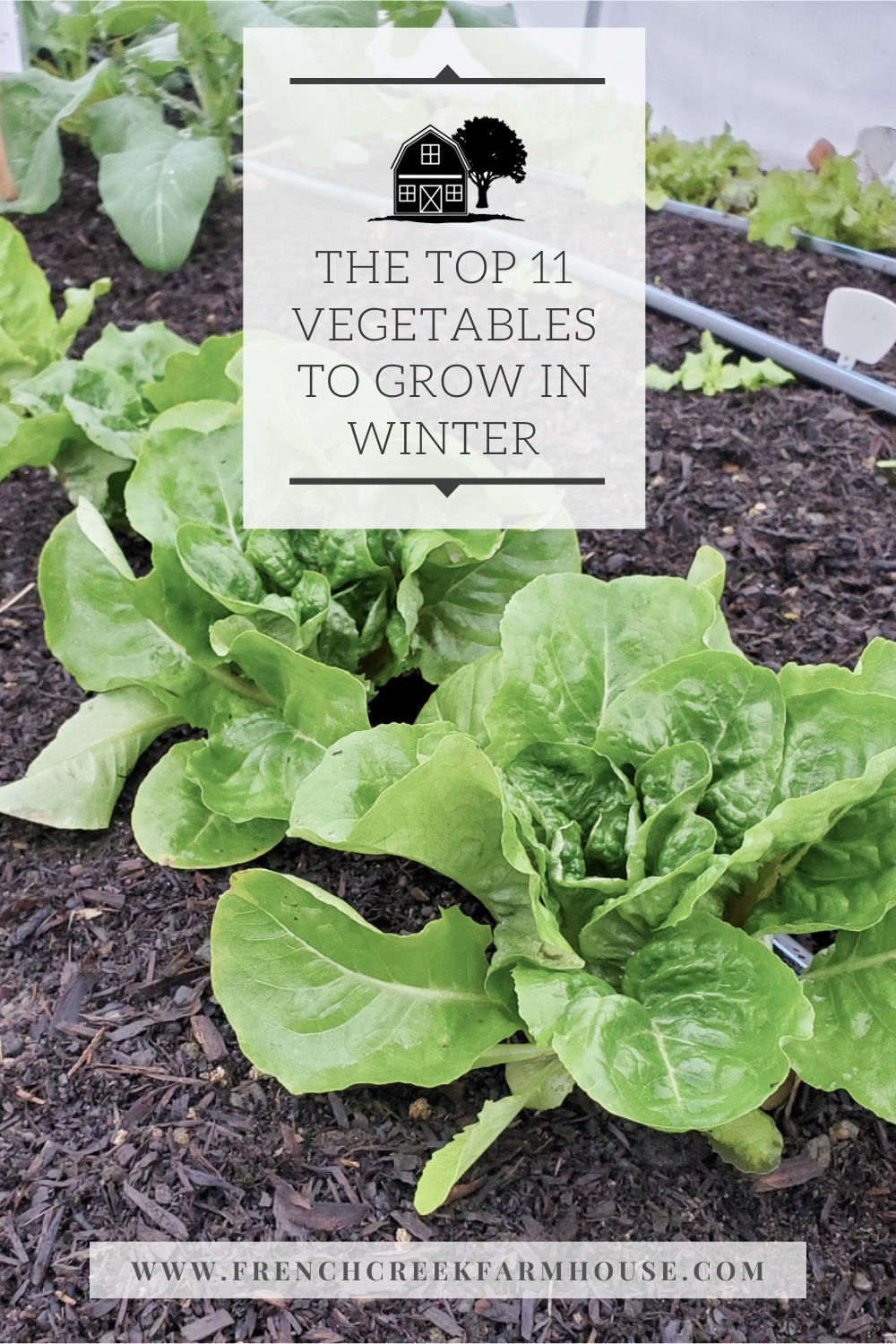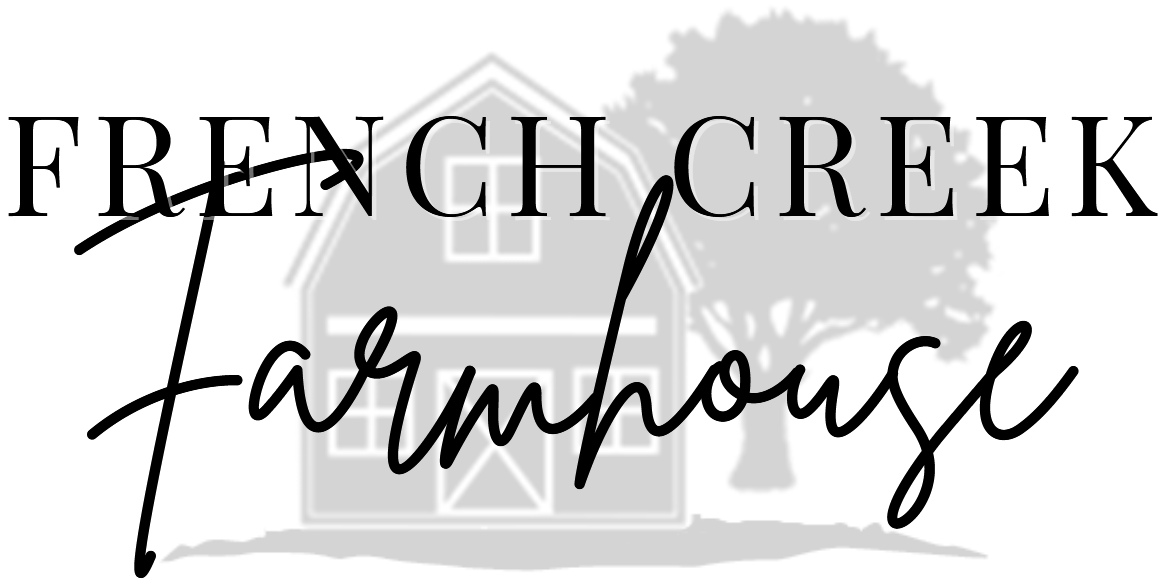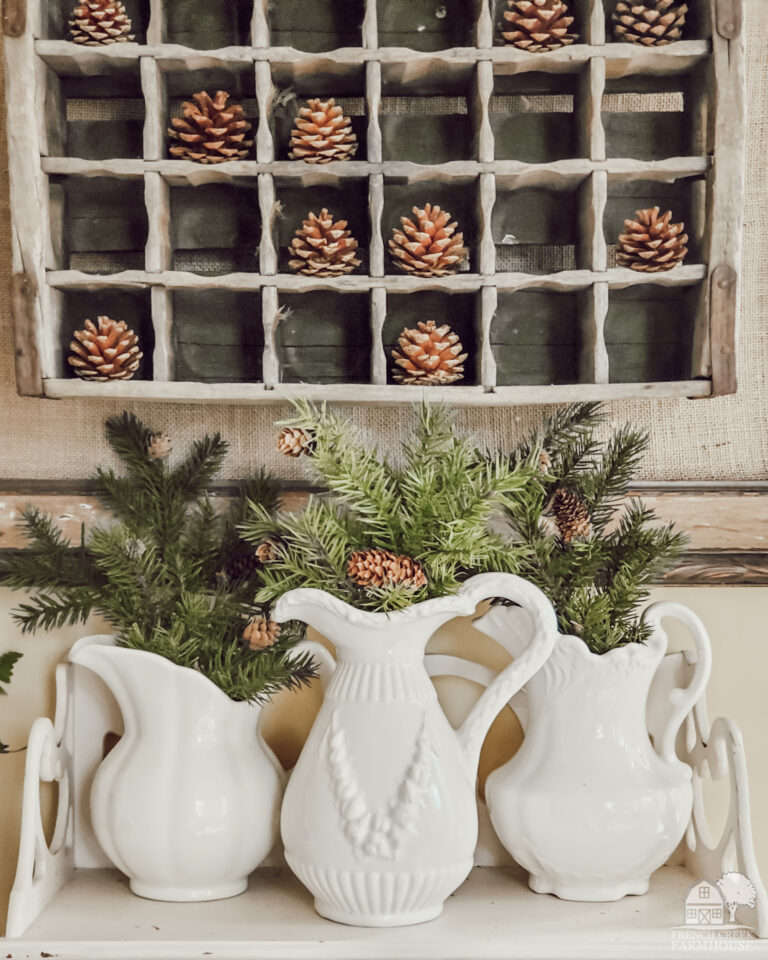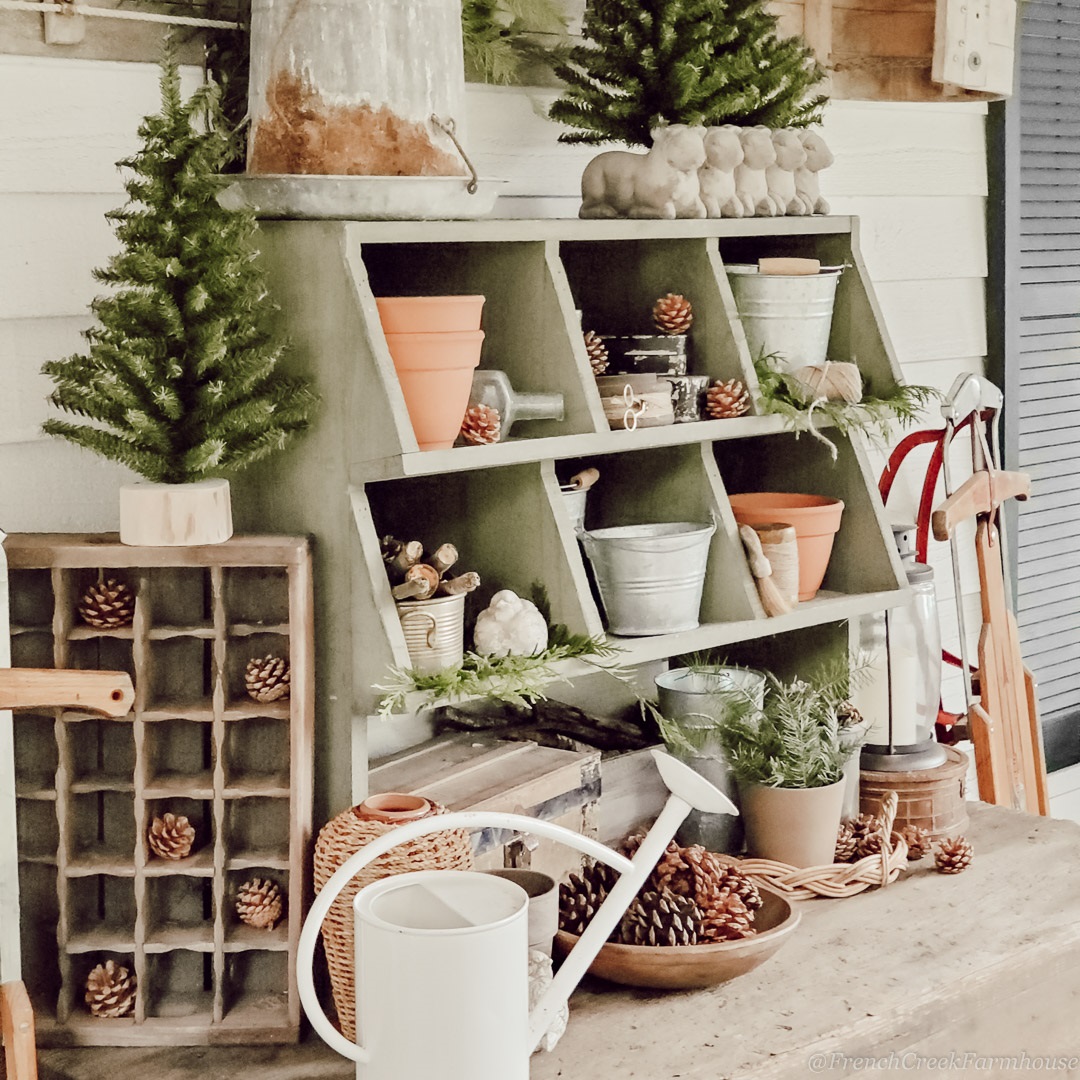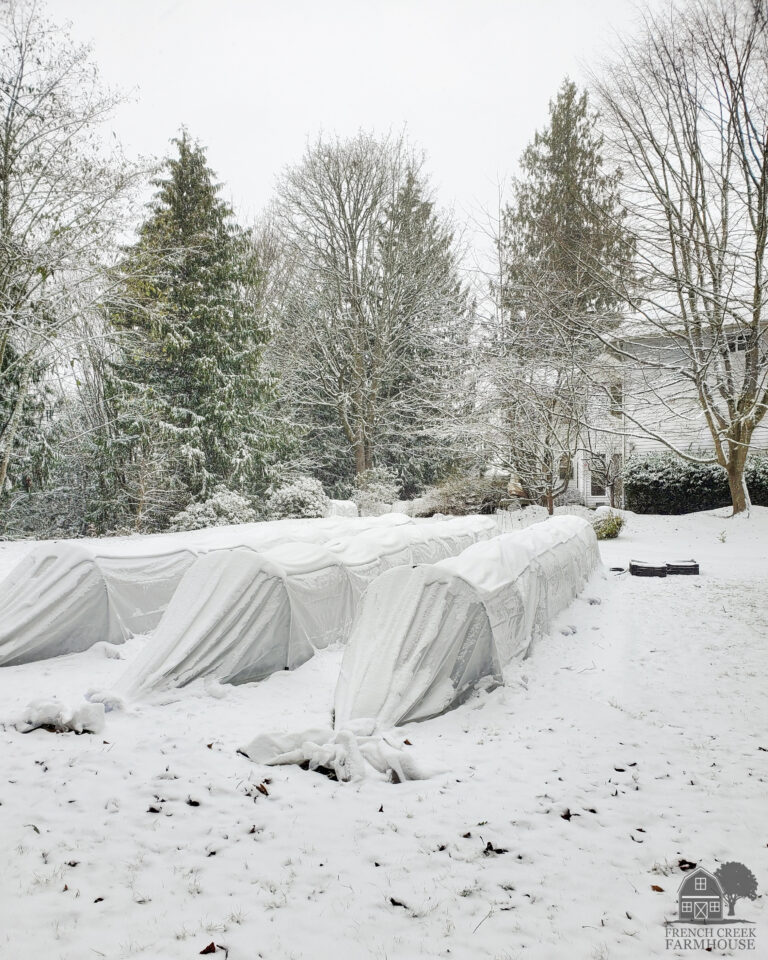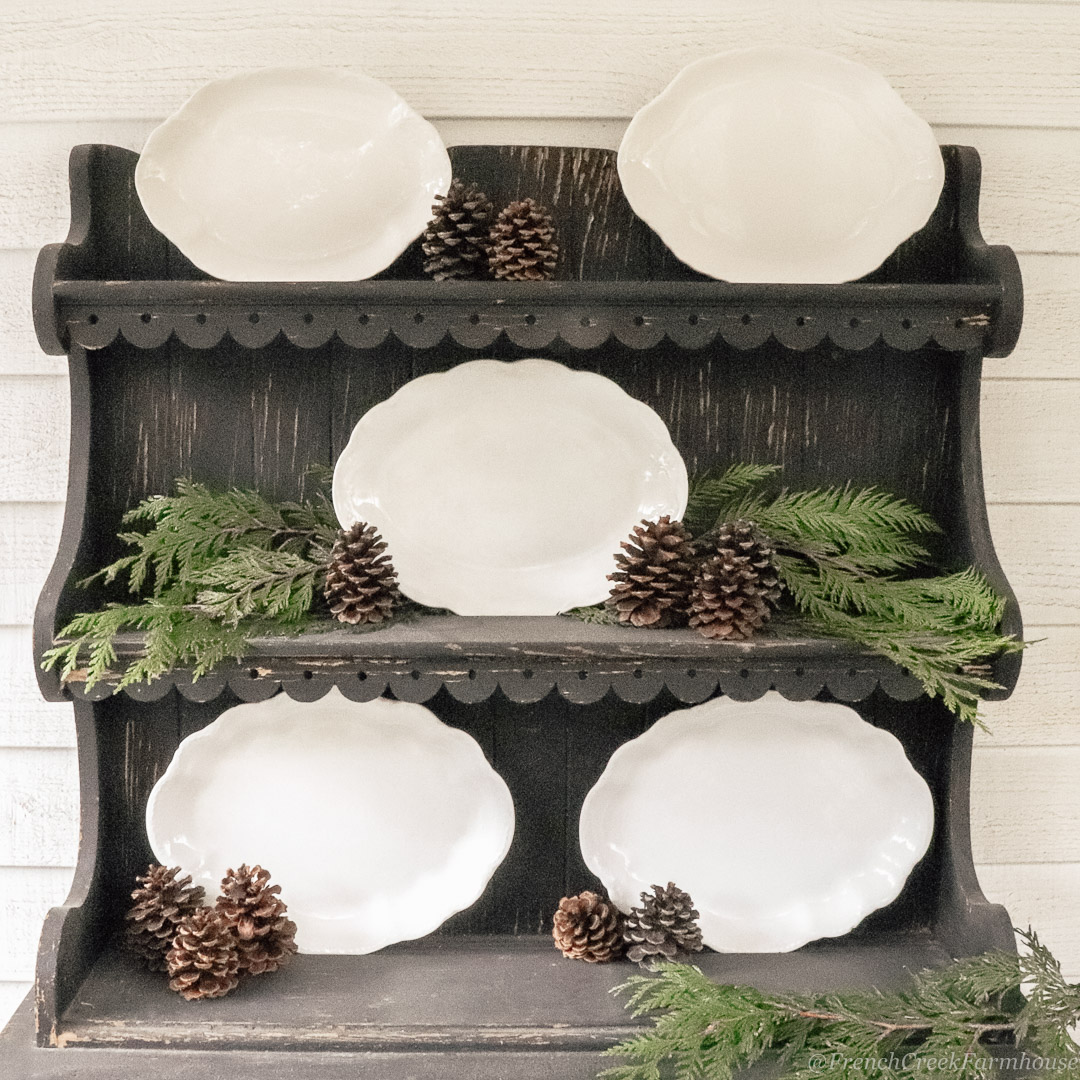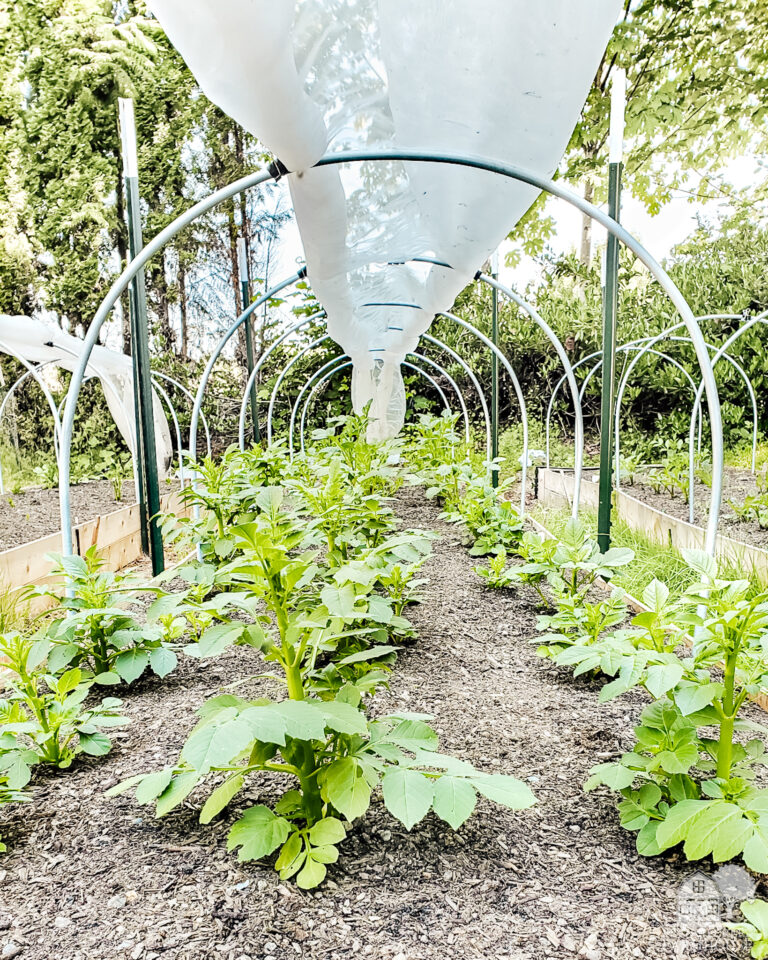Vegetables to Grow in Winter: Our 8 Favorite Crops + 3 We Plan to Try
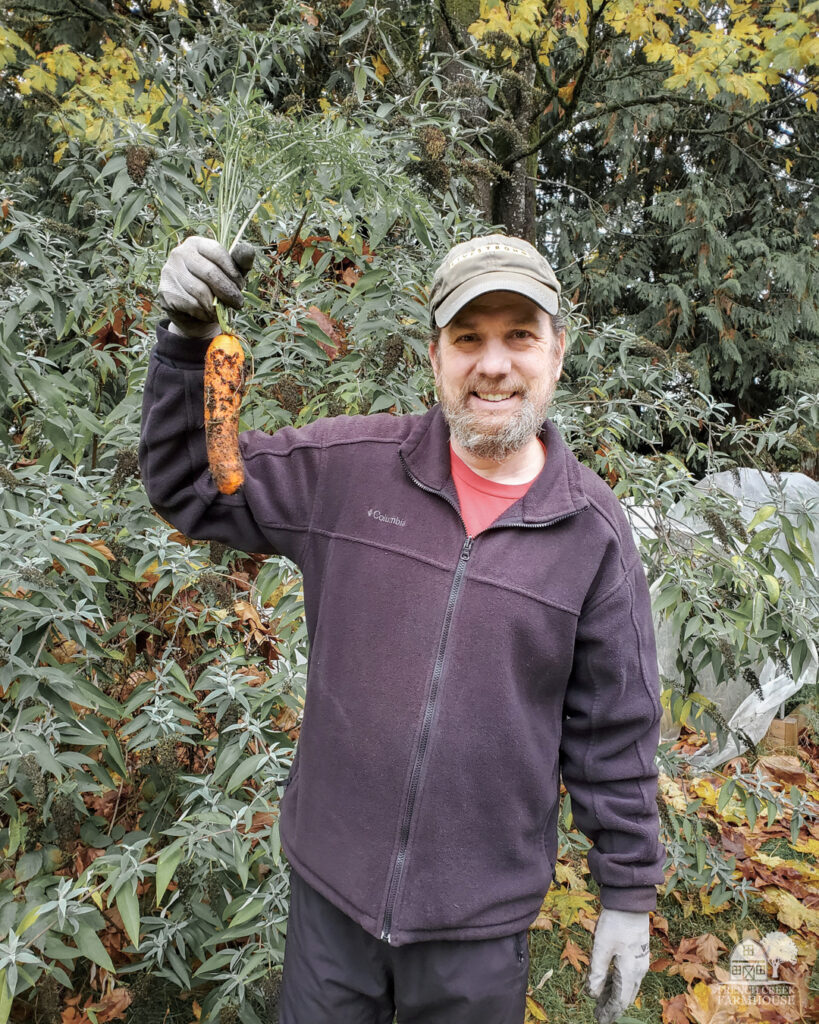
In the deep quiet of winter, when most gardens slumber under blankets of snow, the notion of nurturing life might seem elusive. However the winter garden is a testament to resilience, bridging the gap between practicality and a profound sense of well-being that comes from self-reliance and the ability to provide nutritious food for our families. Let’s explore some excellent vegetables to grow in winter and how you can have a thriving garden during the darkest, coldest months of the year.
Growing vegetables in winter underscores the magic of life’s persistence, a reminder that, even in adversity, the earth yields sustenance.
Winter gardening is a declaration of sustainability and self-sufficiency. It’s a step toward a future where we are less dependent on distant sources for our food. It’s an act of empowerment, a statement that we can live in harmony with the environment and still meet our needs.
As you delve into the world of winter vegetable gardening, remember that this journey isn’t just about nurturing vegetables; it’s about nurturing your spirit, your family, and the planet, too.

Disclosure: This is not a sponsored post, and I have received no compensation for sharing anything that follows. Some links within this blog may be affiliate links, and I might earn a commission if you make a purchase through that link. This usually amounts to cents, not dollars, and helps to support the projects featured on this blog. I only recommend products from companies that I have found to be trustworthy. Read my full disclosure here.

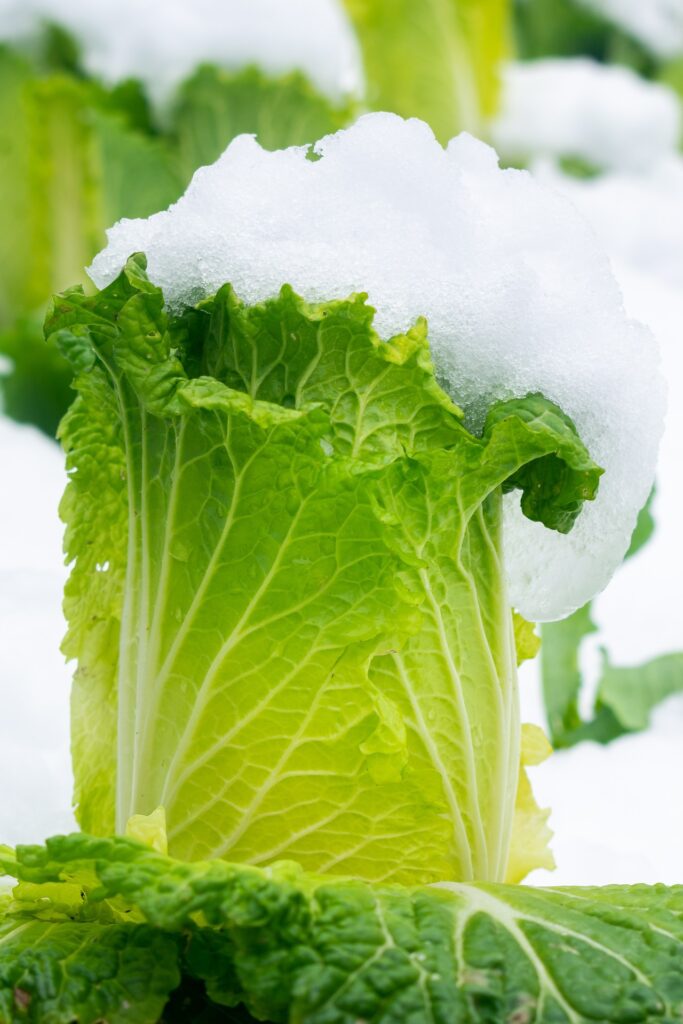
The Advantages of Winter Vegetable Gardening
If you’ve ever tried to grow certain crops in your veggie garden during the spring and summer, only to end up with disappointing results, it just might be that these are your vegetables to grow in winter!
For years, this was my experience with trying to grow broccoli. I would diligently transplant my starts in the spring, only to have them bolt before ever producing those delicious green florets.
Once I started growing my broccoli in the fall and winter, however, it was a game changer!
Why should it matter if I grow them in spring or fall? The conditions are nearly identical, right?
Aha…that’s where it gets interesting. You’ll want to check out this post I wrote which explains photoperiod and how winter vegetable gardening can make all the difference!
But let’s talk about a few other reasons why growing vegetables in winter is smart…
1. Better flavor
Vegetables that prefer cooler temperatures also give their best flavors when growing in these chilly conditions. You might think, for example, that you don’t like beets, but if you’ve never tasted them grown over winter, you don’t know the sweet flavors you’ve been missing!
There are many vegetables to grow in winter that behave the same way, so it’s prudent to take advantage of Mother Nature’s ideal growing conditions this time of year.
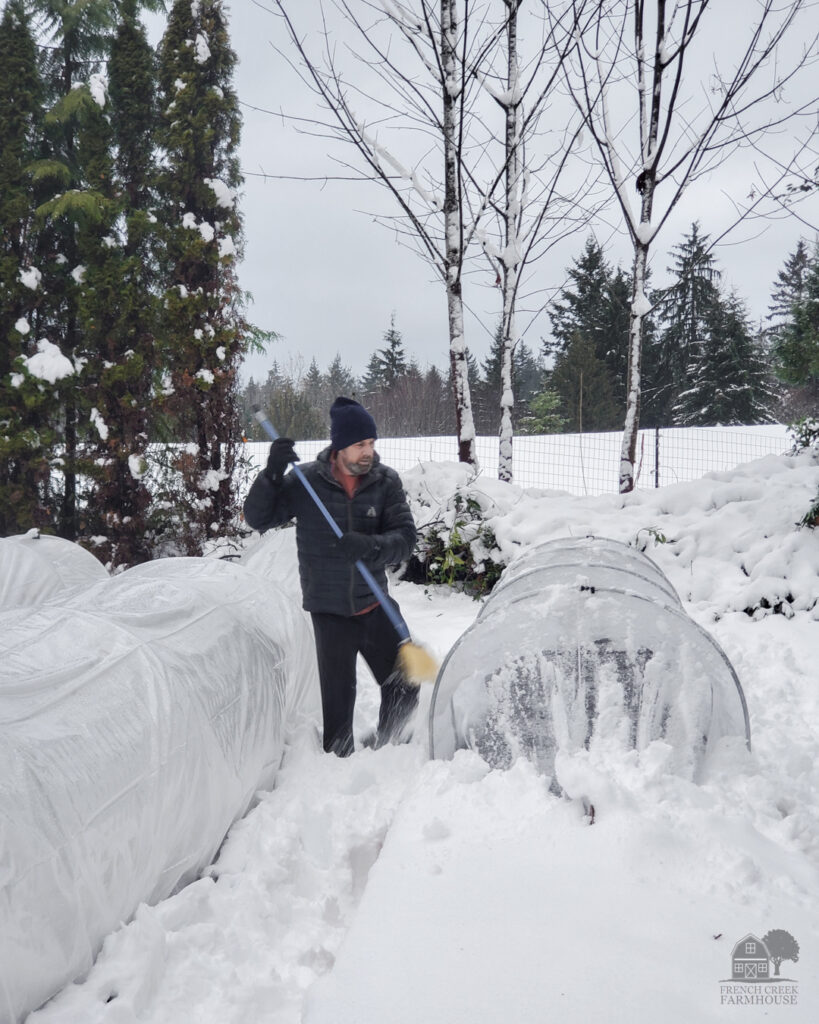
2. Efficient use of space
Our little farmstead sits on just shy of 2 acres, so we don’t have as much growing space as I would like. I mean, if we’re being honest with each other, I would say the same thing if we had 20 acres, but I would maybe say it a tiny bit less often!
My point is, with limited growing space, we need to be efficient to produce what we need. Only using our land for 26 weeks per year (i.e. our typical growing season) means that half of the year would be wasted!
Finding vegetables to grow in winter and using season extension techniques for winter vegetable gardening means that we can grow significantly more food on our land. And, that’s just smart!
{ Related: An Honest Review of Soil Blocking After Two Years }
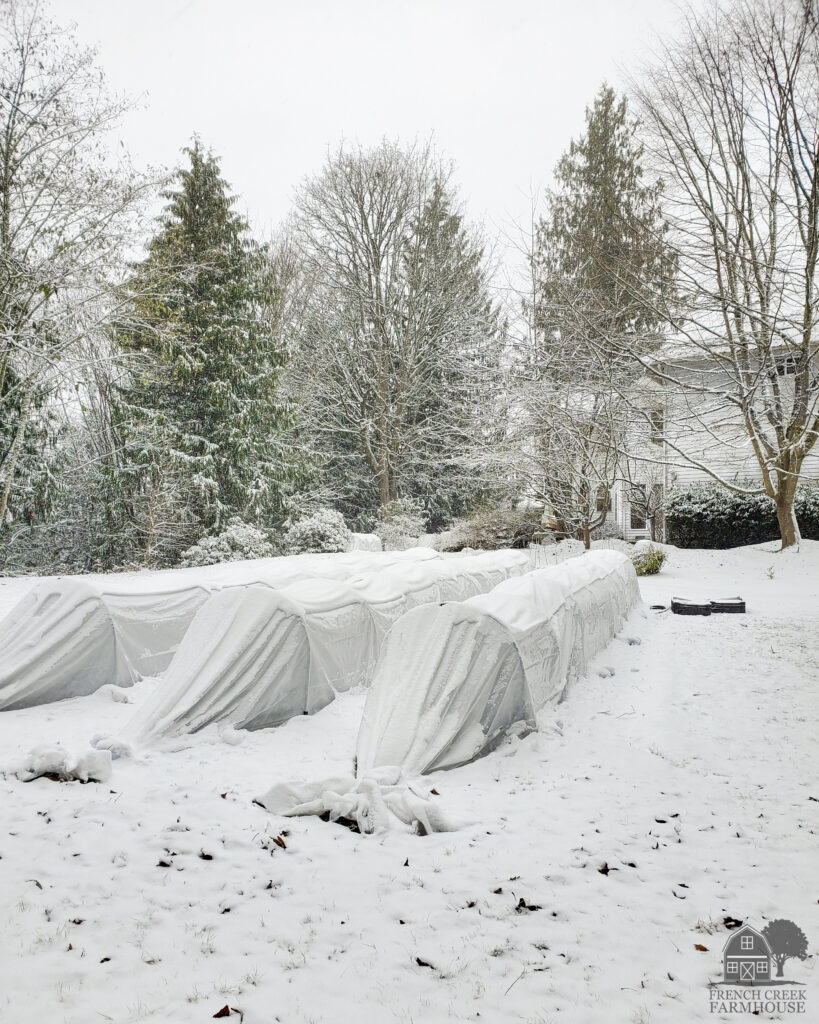
3. Spreading out the workload of growing and preserving
Only working during the period of the year between frost dates means that you are compressing the workload of growing, harvesting, and preserving into a rather short window. This is a fast path to experiencing burnout, and I don’t really want to corrupt or dilute the joy I derive from gardening.
Growing vegetables over the winter means that we re-balance the workload over the course of the full year. This allows us to slow down and enjoy each season we’re in rather than feeling rushed and exhausted all summer long.
{ Related: Burnt Out or Just Lazy? Yes, We Walked Away From Our Farm }
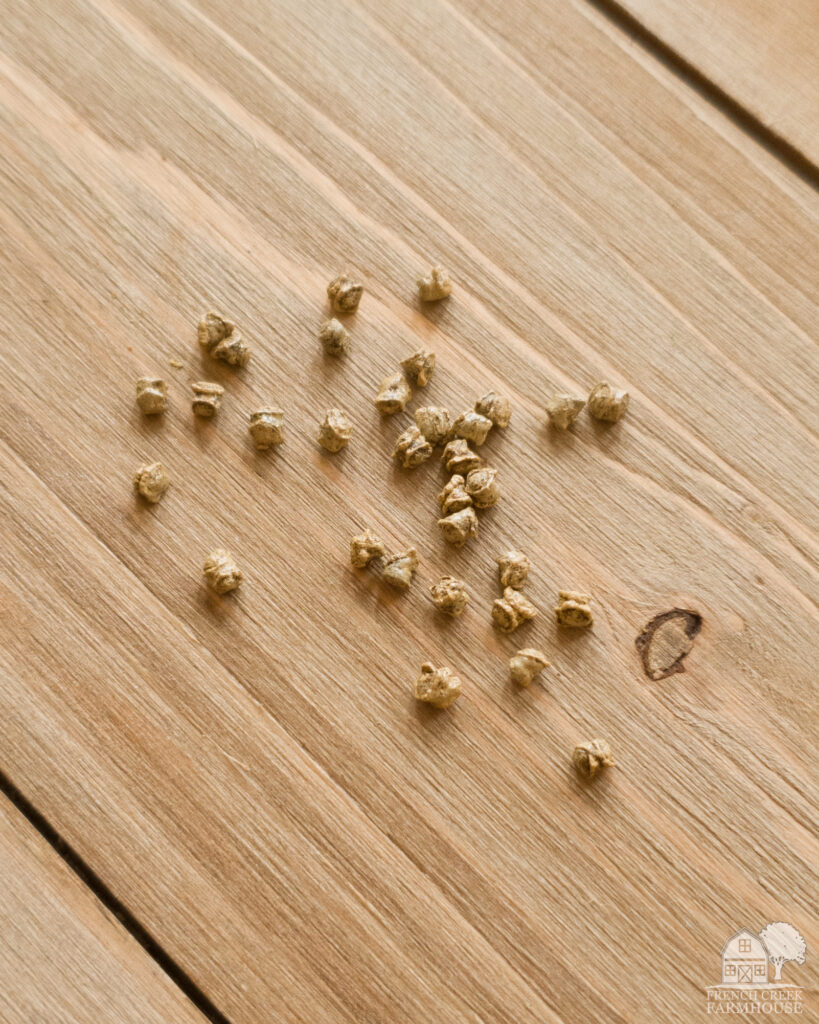
Growing Winter Vegetables: Choosing the Right Seeds for Your Garden
Before you can decide on which vegetables to grow in winter, you need to consider your unique growing conditions.
Important things to consider include:
- Your latitude and amount of daylight
- Your hardiness zone (more on that momentarily)
- Your commitment and desire to spend time outdoors in the winter
No matter what your answers are, you will be able to find vegetables to grow in winter because the range of possibilities can work for everyone.
If, for example, you don’t really enjoy cold and rainy weather, you can certainly create conditions suitable for small indoor gardening and still harvest produce each week!
Now let’s dive into choosing exactly which vegetables to grow in winter….
{ Related: Building a Critter-Proof Garden in 6 Days }
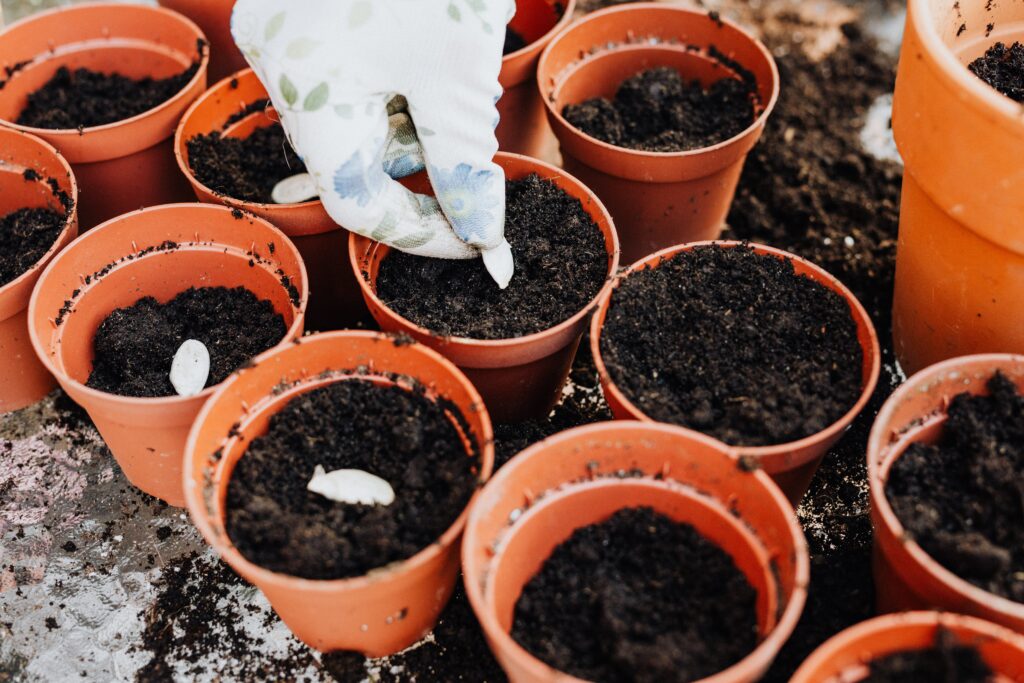
Heirloom vs. Hybrid Seeds
The source of a lot of confusion for gardeners is deciding between heirloom and hybrid seeds. There’s a lot of misinformation that contributes to this confusion, so let’s start by breaking this down a bit.
Heirloom seeds are open-pollinated varieties that have been around for at least 50 years. An advantage to heirloom plants is that they have adapted, naturally, to the growing conditions that best suit them. However, a disadvantage is that these varieties typically have lower yields and can be more temperamental and delicate to grow.
Hybrids, however, are a cross between two varieties of the same species. One variety is used to manually pollinate the other, and the best characteristics of each parent produce a desirable “child”. Some of the reasons why hybrids are beneficial are things like increased yields, better disease resistance, and more consistent shapes/flavors.
There is a misconception that heirlooms are somehow “better” or more prestigious to grow than hybrids, but this simply isn’t the case. Years ago, hybrids may not have offered the same intensity of flavors as heirlooms, but with better breeding strategies, that is no longer an issue.
One important difference that might matter to you, however, is that you cannot save seeds from hybrids and expect to grow the same plant the next year. Seeds from hybrids will not produce the same plant, so you’ll need to buy a new packet every year.
If seed saving is important to you, then you’ll want to grow heirloom varieties. You can keep the heritage going from generation to generation, and someday your grandchildren can be growing the same vegetables in their garden that you grow today!
{ Related: Do You Know All THREE Ways to Grow Beautiful Dahlias? }
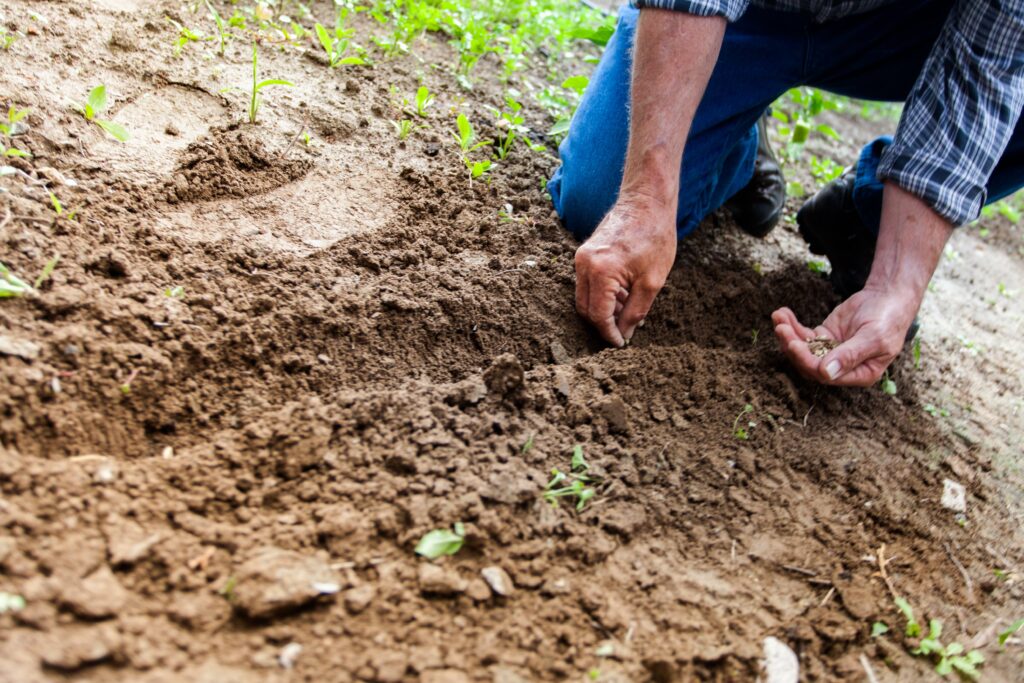
Sourcing High-Quality Seeds
When embarking on a winter vegetable garden, it’s essential to find high-quality seeds. Quality seeds are more likely to germinate reliably and produce strong, healthy plants. The last thing you want is to be thwarted by seeds that are duds.
Now, to be fair, it’s very unlikely you’ll experience a 100% germination rate because that’s just not how nature works. You always need to be prepared for some loss.
High quality seed suppliers will test each batch and provide germination rates and testing dates right on the seed packet for you.
Here are some tips for sourcing the best seeds:
- Local Seed Suppliers: Local seed suppliers or garden centers are often well-versed in the needs of your specific climate. They can recommend varieties that are known to perform well in your area.
- Certified Organic Seeds: Certified organic seeds are free from synthetic chemicals and genetically modified organisms. They align with our principles of sustainability, and so they’re the only choice for us.
- Reputable Online Retailers: Many reputable online seed retailers offer a wide selection of seeds. Be cautious, and be sure to read reviews and check for customer feedback to ensure you’re purchasing from a trustworthy source. If something sounds too good to be true, it usually is! We happily and wholeheartedly support Johnny’s Selected Seeds because they are committed to advancing the craft and knowledge of growing.
- Seed Saving: If you’ve had success with certain winter crops in the past, consider saving seeds from your own plants. This not only saves money but also ensures that your seeds are well-suited to your local conditions. Remember, you’ll only be able to save seeds from heirloom varieties!
{ Related: Prepping Our Raised Beds for Summer }
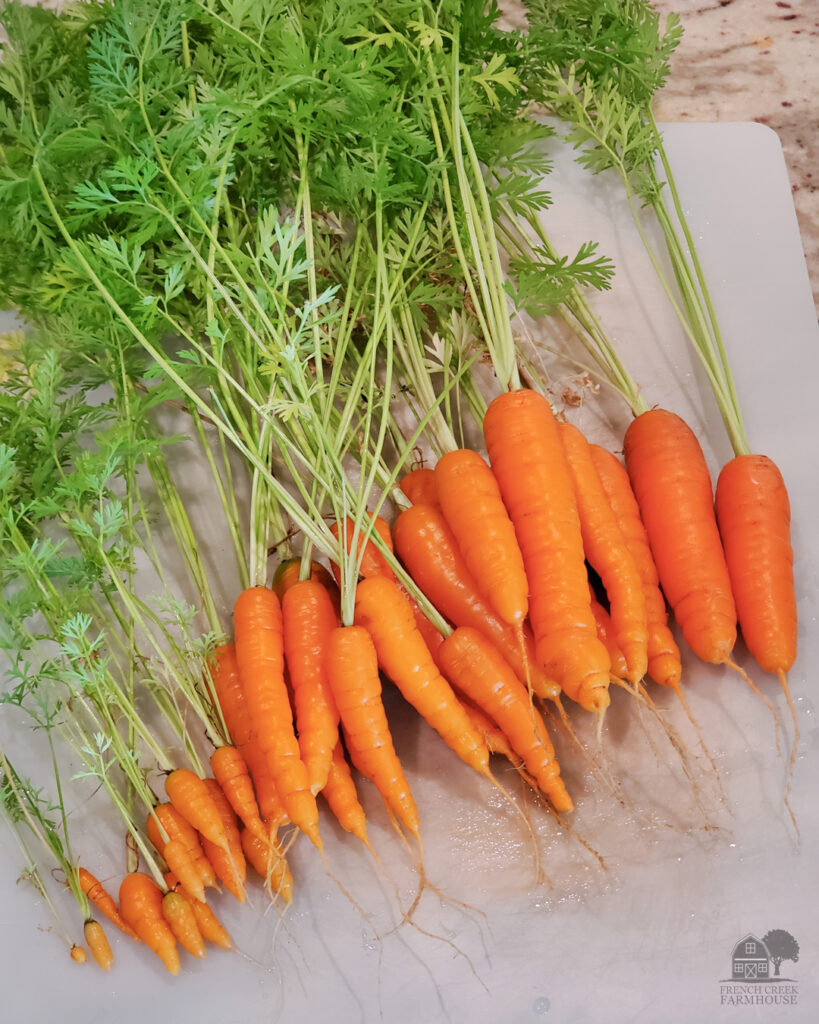
8 Cold-Tolerant Vegetable Varieties We Grow in Winter
While there are many options of vegetables to grow in winter, there are some that we’ve grown more fond of over the years than others. These are our favorites:
1. Carrots
Grown over the winter, you’ll harvest the sweetest carrots you’ve ever grown! The cold weather causes carrots to convert stored starches into sugar, giving them a far sweeter taste.
‘Napoli‘, ‘Yaya‘, ‘Aranka’, and ‘Mokum’ are all excellent varieties for winter growing. We plant 16 carrots per square foot in our garden, but you will need to adjust depending upon the variety you choose to grow.
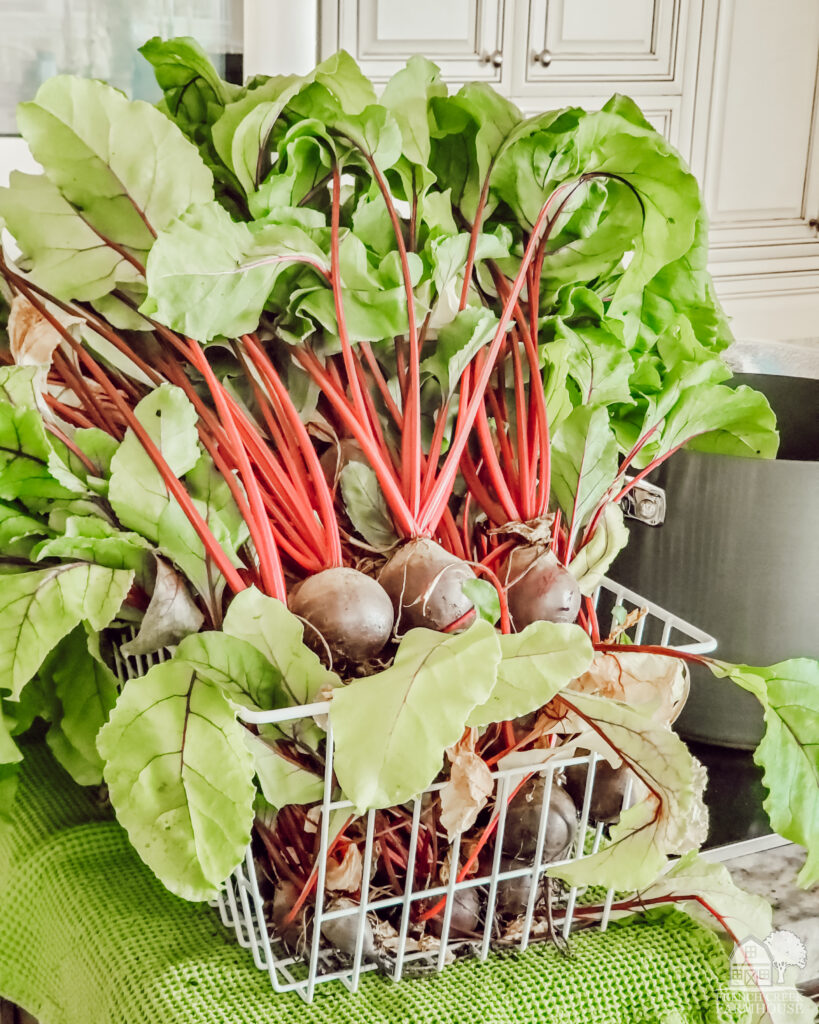
2. Beets
Beets are another vegetable that gets sweeter when grown in the winter. Root vegetables are naturally starchy, but they convert that starch into sugar as a way to protect against freezing. This makes them ideally suited for winter vegetable gardening.
Our favorite is the hybrid variety ‘Subeto’. It’s a quick-to-harvest crop and incredibly reliable for us–not to mention sweet. These beets are so tasty, in fact, that I munch on them while I’m preserving them! Just one of the hazards of gardening such delicious produce!
We plant 9 beet seeds per square foot. However, it’s important to know that one beet seed will produce multiple seedlings. Once they’re a couple inches tall, we thin out the extra seedlings.
You can plant beets in 3-week successions if you want to have a steady harvest, but we plant ours all at once. I prefer to batch process and preserve the entire crop at once, but it comes down to personal preference.
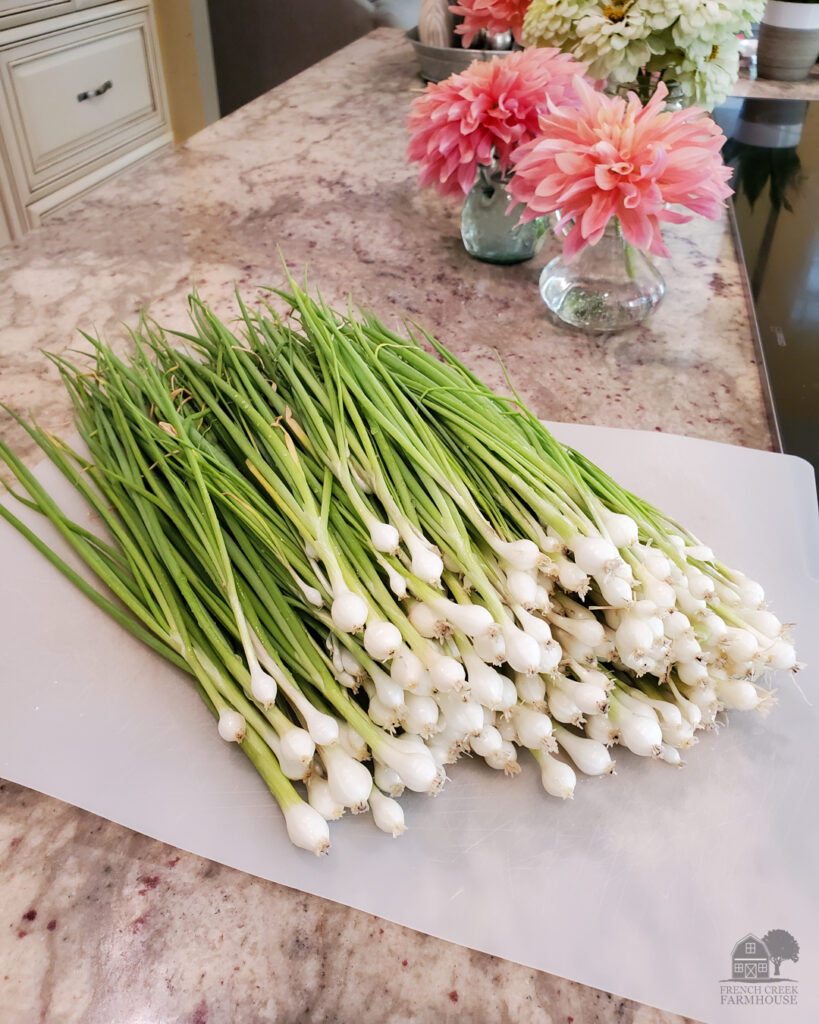
3. Bunching Onions
One of my favorite ways to flavor recipes and garnish dishes is with chopped green onions. Bunching onions are an easy crop to grow in very little space. I have even grown hundreds of them at a time in pots on our deck when I lacked bed space!
‘Evergreen Hardy White‘ is our preferred variety because they are exceptionally cold-tolerant. We direct sow these into the garden with 1″ spacing. They are a quick-to-harvest crop, so you can easily manage multiple sowings per year. We aim for 3-4 crops per year so we always have them on hand for cooking.
Keep bunching onions well-watered, but don’t allow the soil to become soggy. Good drainage is key!
I chop and store our bunching onions in the freezer for use in recipes. And don’t throw out the white bulb part of the plant–it has loads of flavor! We use them just like another other onion in dishes like stirfry, soups, etc.
{ Related: How We Prep and Preserve Food for Storage }
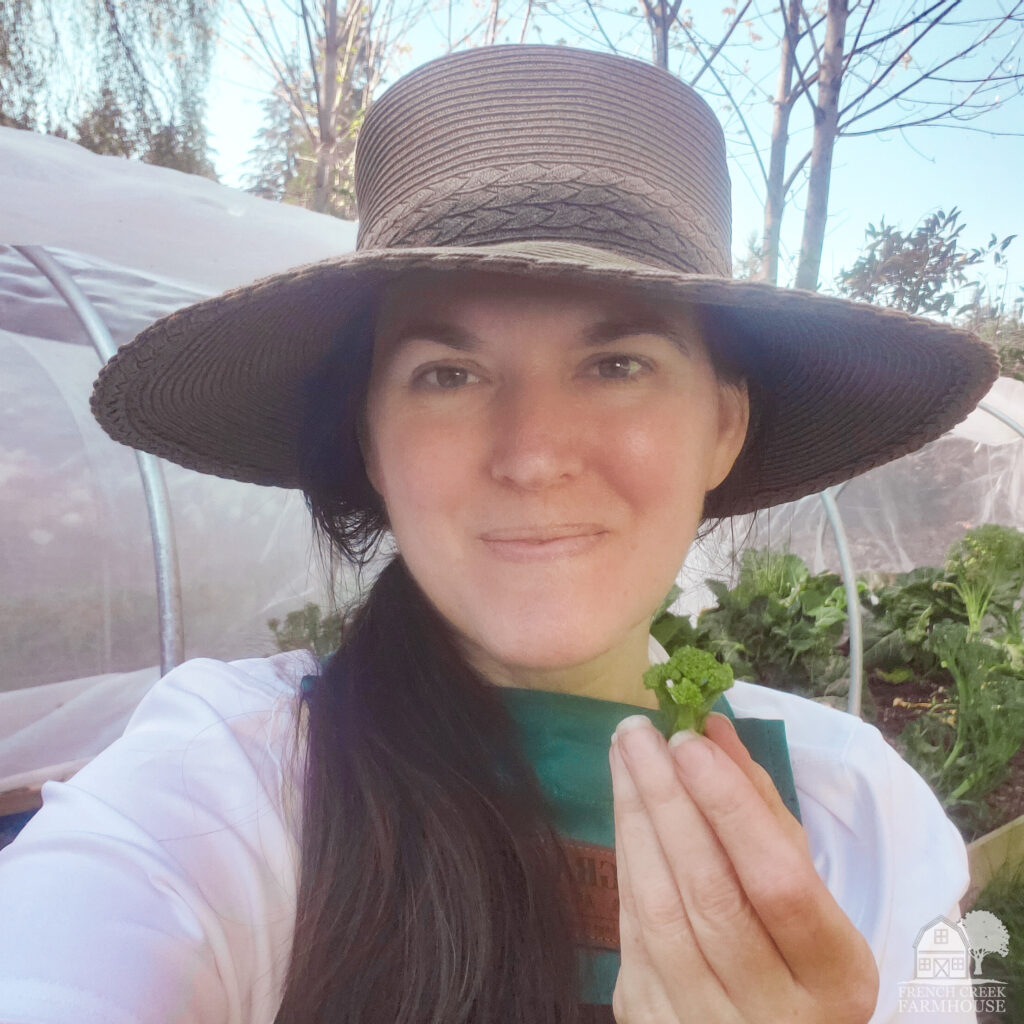
4. Broccoli
The broccoli we grow overwinter is more flavorful than any I’ve ever had in my entire life. I’m not even sure if “harvesting” is the right term when I’m basically just snacking my way through the beds!
This past year, we grew ‘Belstar‘, and while the flavor was amazing, it isn’t actually intended for overwintering in our Northern growing conditions. We planted it very close to our windbreak and in full sun, and I think that’s the only reason it was successful.
Better varieties to consider for overwintering are ‘Kariba’, ‘Marathon‘, and ‘Emerald Crown‘.
We space our broccoli 12″ apart in rows that are 18″ apart. They are on drip irrigation, which allows us to cover our beds with low tunnels during the very coldest parts of winter without the plants being undernourished. But, be sure to keep your broccoli well-vented during the warmer parts of the day if you use tunnels, otherwise they’ll be susceptible to all sorts of problems.
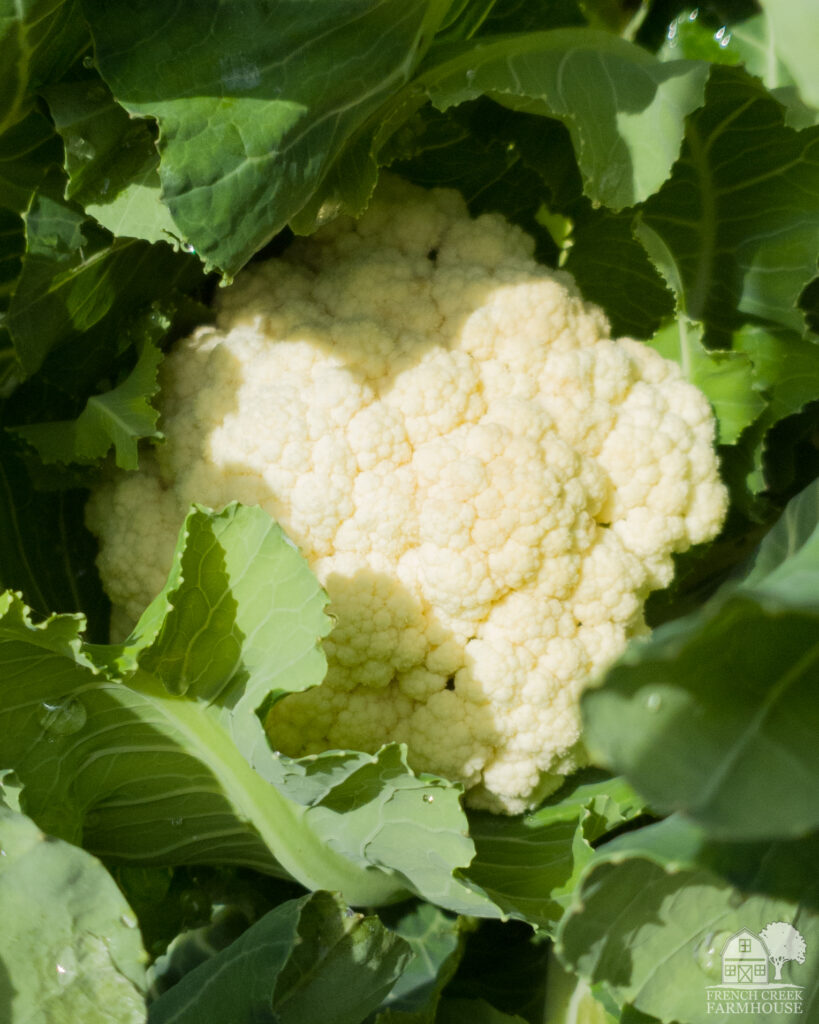
5. Cauliflower
In our home, cauliflower is a staple food. We use it in place of rice, as a side dish, and even oven-roasted as a main dish. It’s so versatile!
What we’ve learned from growing cauliflower over winter is that it needs a little more protection than some of our other winter crops. We had especially frigid temperatures last year (single-digits and lots of snow), and we lost more than half of our cauliflower crop. The plants that survived were, like the broccoli, planted closest to our windbreak and, therefore, received the most protection from the bitter cold.
So far, we have only grown the ‘Skywalker‘ variety, and it’s beautiful. I’m interested in trying both ‘Amazing‘ and ‘EarliSnow’ in the future because of their tolerance for cold stress, however neither of those varieties are organic. This is why we’ve stuck with ‘Skywalker’, and I think we just need to find a way to better protect our plants during especially cold winters because the heads they did produce were incredible. I’ll be sure to report back after we’ve done any trials of other varieties.
In our garden, we space our cauliflower 18″ apart in rows 24″ apart to provide adequate airflow around these very large plants.
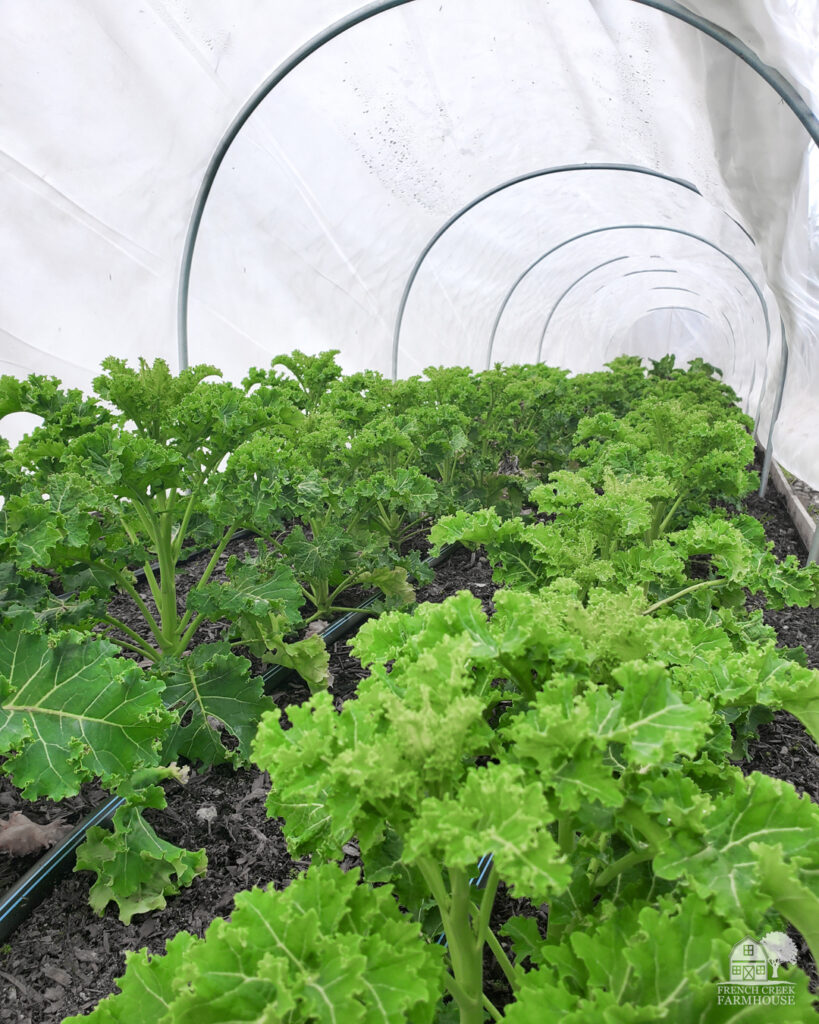
6. Kale
If I had organized this list in order of most beloved vegetables to grow in winter, kale would have been near the very top. This is simply one of the easiest and most reliable crop we grow in winter. Kale is a plant that thrives during a time when everything else will struggle.
The other thing I love is that if you consistently harvest leaves as you need them, you can go ahead and let your plants bolt in the spring and start to flower. Not only are they incredible early sustenance for your pollinators, but the flowers are excellent and long-lasting filler in bouquets as well!
Kale is truly the Swiss Army Knife of winter vegetables!!
We grow ‘Darkibor‘, which is very similar to ‘Winterbor‘, but organic. We start them indoors in late summer, then transplant them out to the garden, spaced 12″ apart in rows 18″ apart.
{ Related: How We Created a New Landscaping Bed }
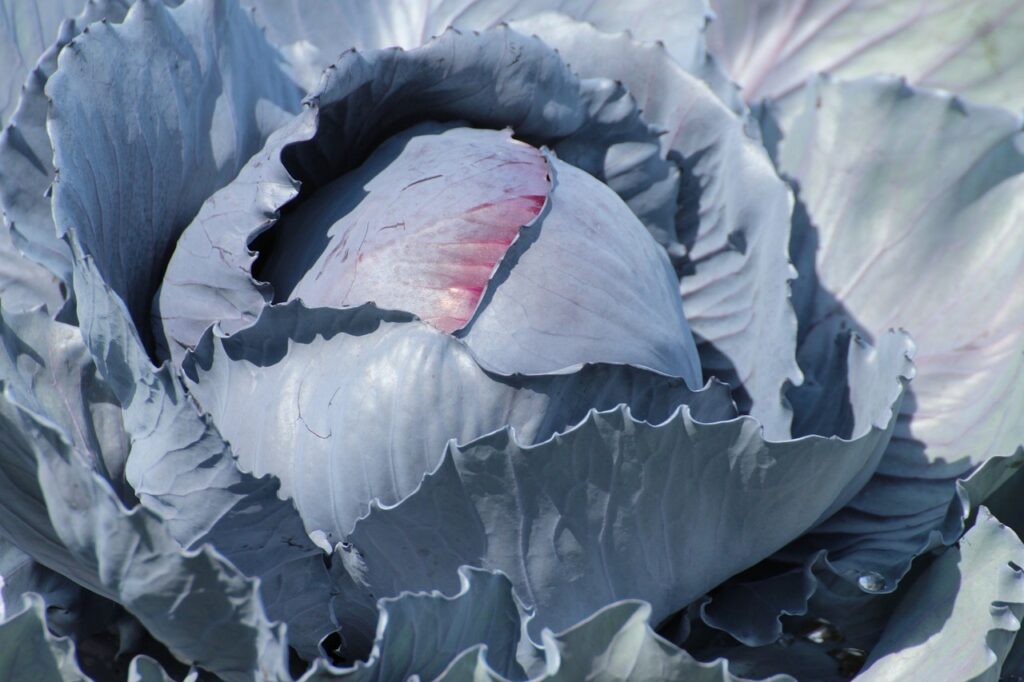
7. Cabbage
I would be happy to eat cabbage every single day. Yep, I love it that much! One of our favorite ways to enjoy it is in place of rice in “grain” bowls. It’s also perfect to shred into stirfry, and I’ll toss a handful into my smoothie, as well. And don’t even get me started on coleslaw–yum!!
Since it doesn’t have much flavor on it’s own, it all but disappears as it takes on the flavor of whatever you cook with it.
It’s also a great choice of vegetables to grow in the winter because it likes cool temperatures.
Cabbage does best in locations with mild winters, where temperatures don’t often dip below freezing. You’ll need to start it indoors, but in 4-6 weeks, transplants can be made anytime between September and February. They’ll be ready to harvest about 3 months after transplanting.
The other important thing to know is that cabbage is a heavy feeder. Make sure to keep the soil well irrigated so that the plants can take up nutrients properly. We generally feed with a mixture of liquid kelp and fish emulsion about every other week. Stinky stuff, but the plants love it!
We have only ever grown ‘Integro‘, which is a beautiful purple color with thick leaves. I donate the outer “wrapper” leaves from our plants to our neighbors with chickens, and they go nuts for it!
Cabbage plants are large, so we space them 12″ apart in rows 18″ apart for good airflow.
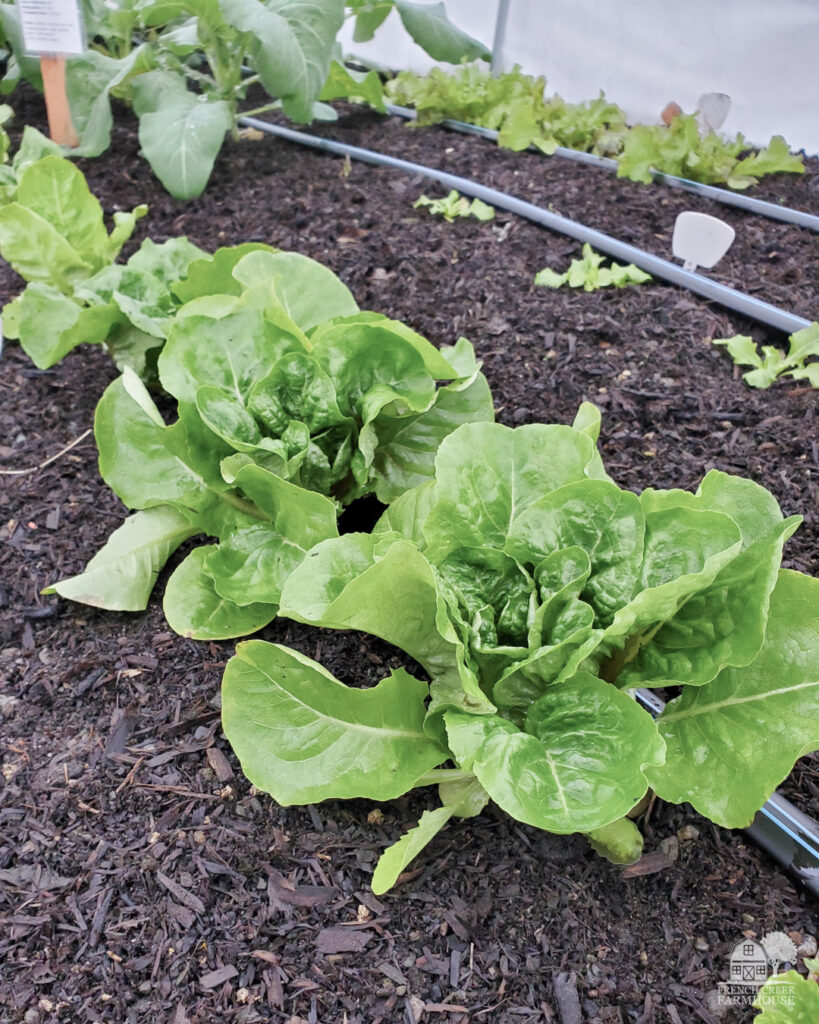
8. Lettuce
Without a doubt, lettuce is the darling of the winter vegetable garden! Useful on a daily basis, you don’t have to wait weeks or months for a harvest to enjoy fresh produce when you grow lettuce.
We grow three varieties so that we can make our own salad mix: ‘Bauer‘, which is an oakleaf variety, and ‘Buttercrunch‘ and ‘Milagro‘, which are both butterheads.
All of our lettuce is start indoors, and transplanted to our beds at about the 3 week mark. Our lettuce is spaced 10-12″ apart, in rows 18″ apart. We succession plant 24 heads per week throughout the season, and we tend to harvest the entire head (unless we just need a few leaves for sandwiches, etc). This gives us enough for daily salads, while accounting for any potential losses.
Being that lettuce is more tender when it comes to frost, you’ll need to offer protection from especially cold temperatures. But even with single digit temperatures, we’ve had no trouble growing lettuce over the winter when we use low tunnels.
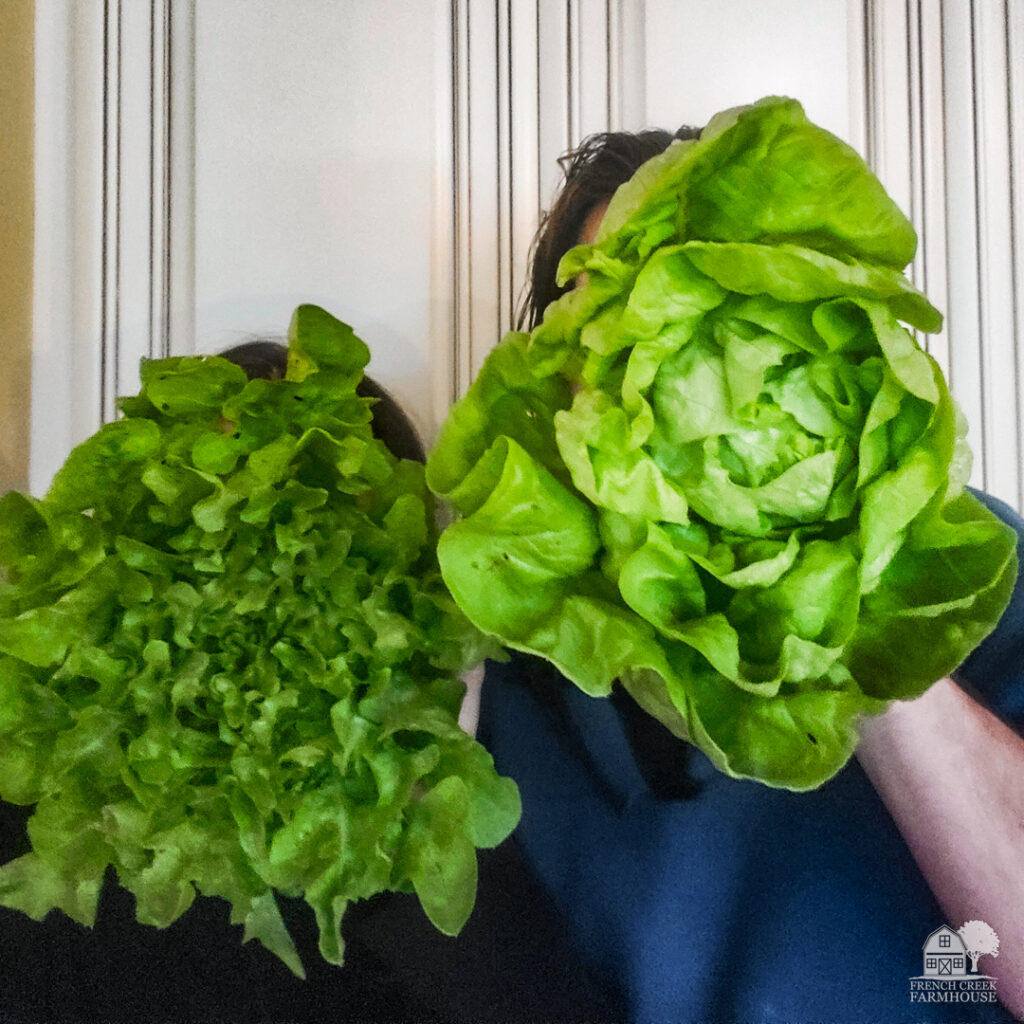
3 Winter Vegetables We Plan to Trial
I’m always trying to think of more ways to be efficient with our growing practices, and what other vegetables we could potentially grow for season extension. These are the top three on my list to try:
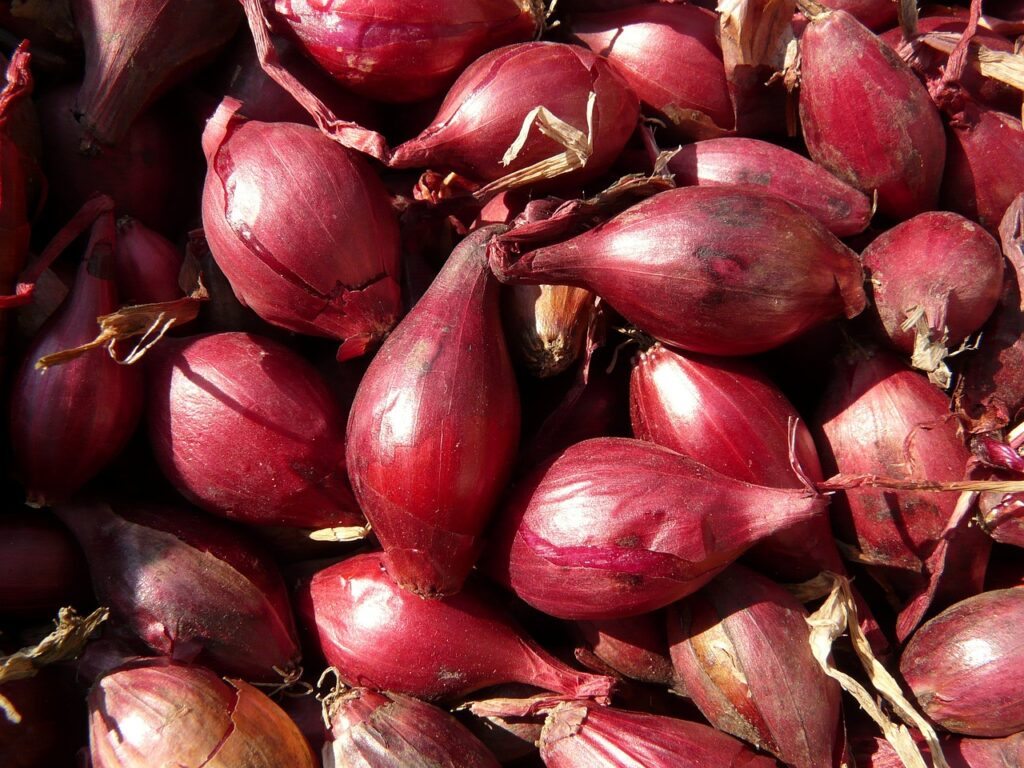
1. Shallots
Like a cross between an onion and garlic, we love use shallots in recipes. Being able to growing some ourselves would be fantastic, and this is a crop that’s a great candidate for winter growing.
‘Matador‘ is a French variety that’s been hybridized for Northern latitudes. Planting shallots after your first frost means you’ll be ready to harvest them in late spring.
{ Related: Harvest Grain Bowl with Shiitake Miso sauce }
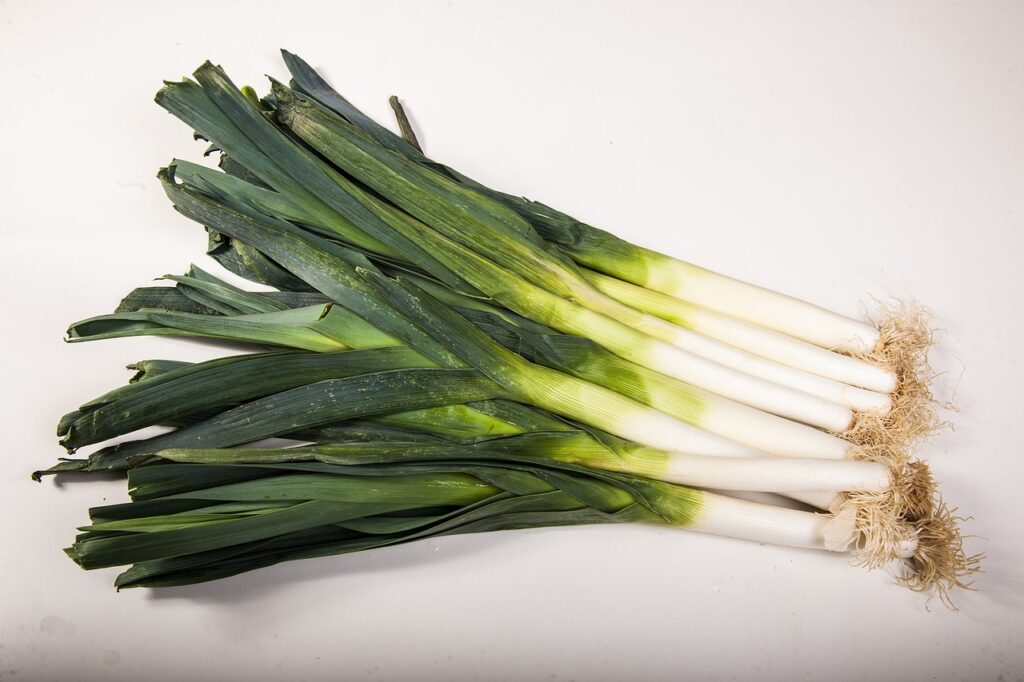
2. Leeks
Another vegetable that I love in soups is the leek. There’s nothing cozier than a warm bowl of potato leek soup on a chilly day!
Leeks are extremely frost tolerant, so they’re an ideal candidate for growing in the winter. ‘Bandit’ and ‘Surfer’ are two varieties that I hope to trial in the near future.
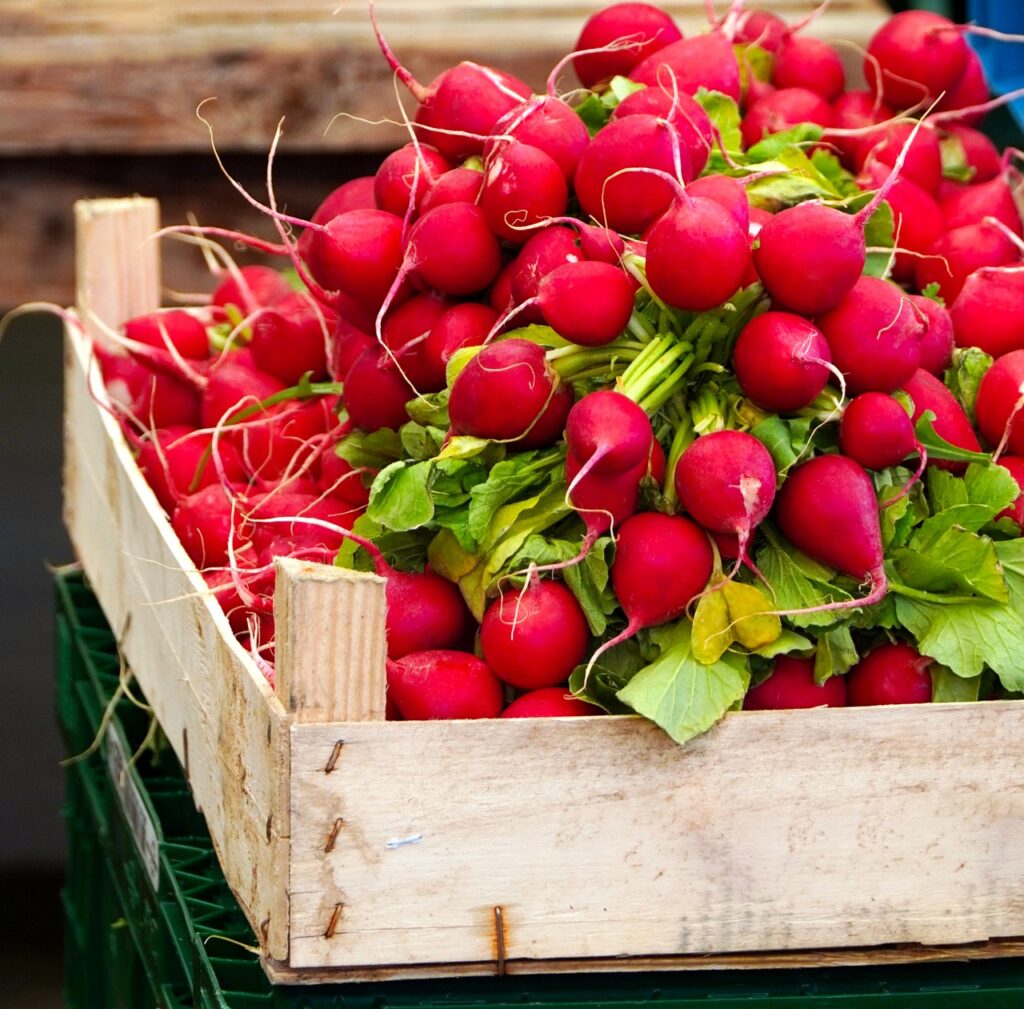
3. Radishes
Okay, I need to tell you, radishes have not historically been my thing. But I want to love them because they’re so pretty, and they’re easy to grow!
I don’t want to relegate the radish to our salad bowl. I really want to find other ways to eat them that I enjoy. So this winter, that’s my goal! Stay tuned…
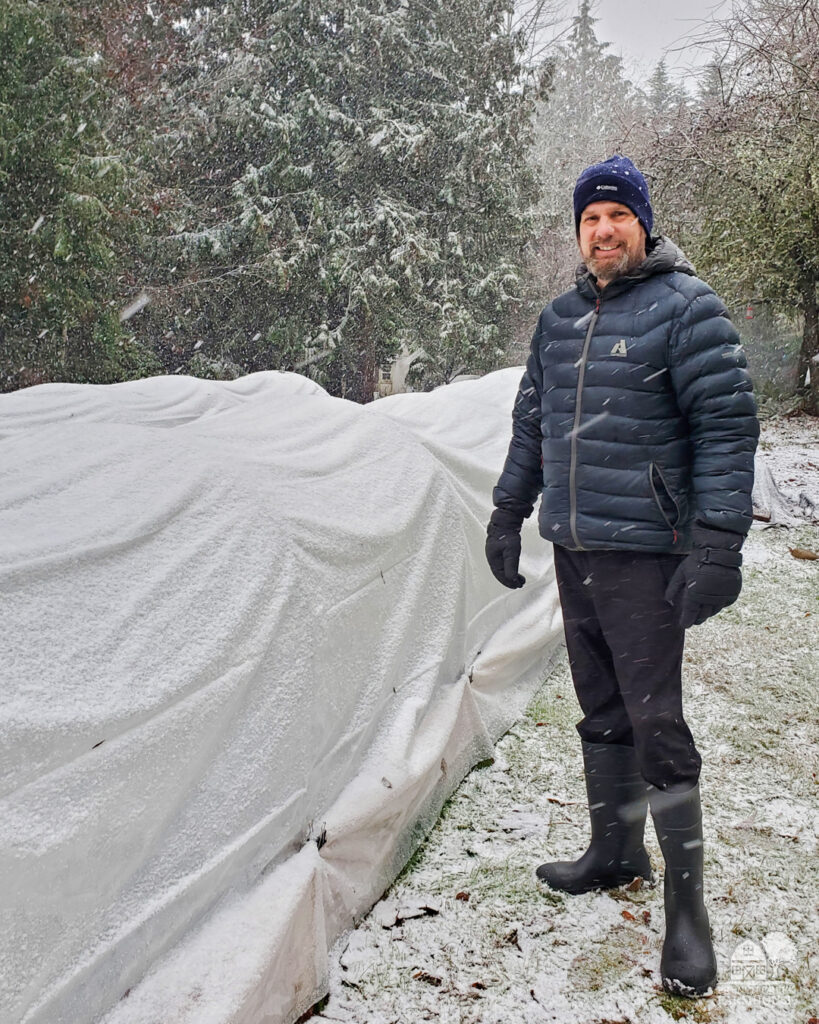
How and When to Plant Your Winter Vegetable Garden
Your winter vegetable garden begins in late summer and early fall. This is the time when you want to be growing your seeds indoors to prepare for transplanting. The exact date of when to start, however, will depend upon the exact crops you’ve selected, and your Persephone Period. You can read more about that in this post.
But there are a few more things you’ll need to consider, as well. Let’s dig in.
Knowing Your Hardiness Zone
So many gardeners don’t understand the purpose of Hardiness Zones. They believe that is dictates when to plant, or when to expect a frost–but, alas, no.
Hardiness zone is an indication of the lowest average temperature for your area. When we think of the hardiness of plants, we’re referring to how much cold they can tolerate.
You need to know your hardiness zone so that you can choose varieties of vegetables to grow in winter that are well-suited to the cold (or lack thereof) that you’re likely to experience over these months.
You’ll use your zip code to find your hardiness zone, but you need to pay attention to what’s true for where you are actually located. For example, where we live in Snohomish, WA is zone 8b. This means that our average annual minimum temperature is 15-20° F (-9.4 to -6.7° C). However, our home sits at a higher elevation and is generally much colder than temperatures down in the valley. Micro-climates can skew things by a zone or two, so use caution.
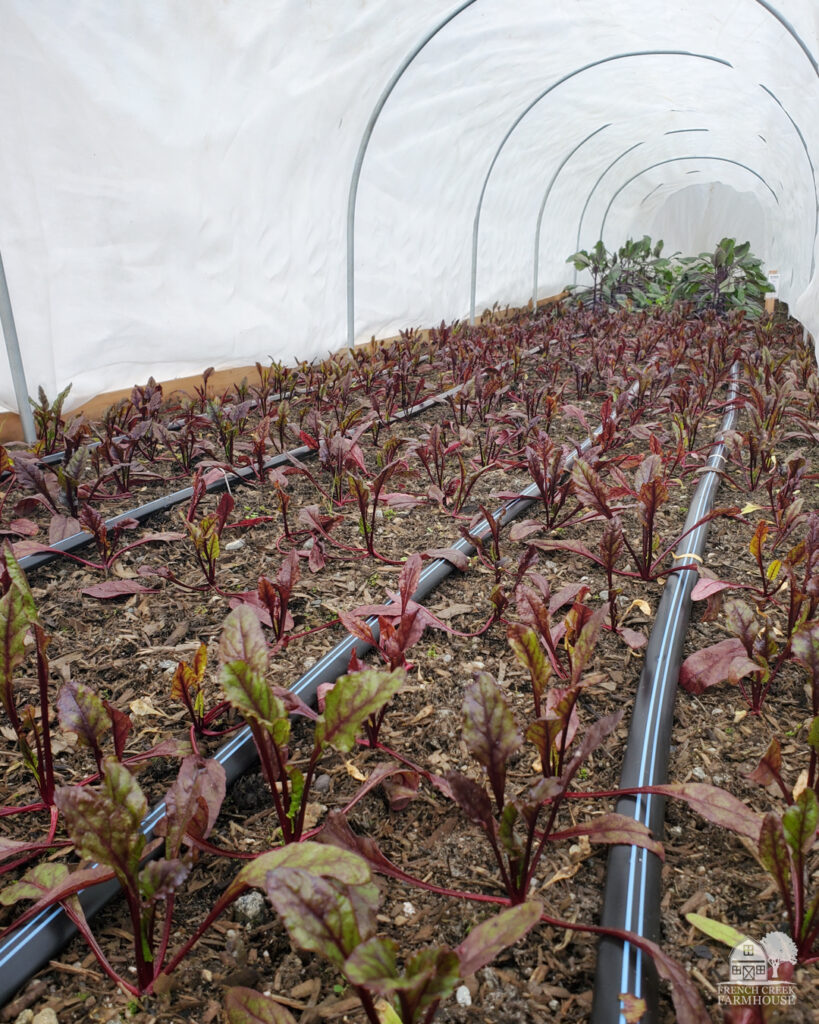
Planning for Winter Sowing
A good rule of thumb is to plan for the next year’s crops at the time when you’re harvesting the current year. This means, for example, that you should start ordering your tulip bulbs in April. And, you should be ordering the seeds you need for your winter vegetable garden in late spring.
This helps to ensure that what you want will be in stock, and you won’t be shorthanded when it comes time to start your seeds in late summer.
To help you keep track of all your garden planning and seed starting, download my printable Garden Journal and Planner with 16 helpful pages for staying organized.
Overwintering Your Crops
When it comes to growing vegetables during the winter, you need to learn about the proper techniques for protecting your plants throughout their growth. I’ve written a very detailed and thorough guide to Winter Vegetable Gardening that will teach you every little thing you need to know.
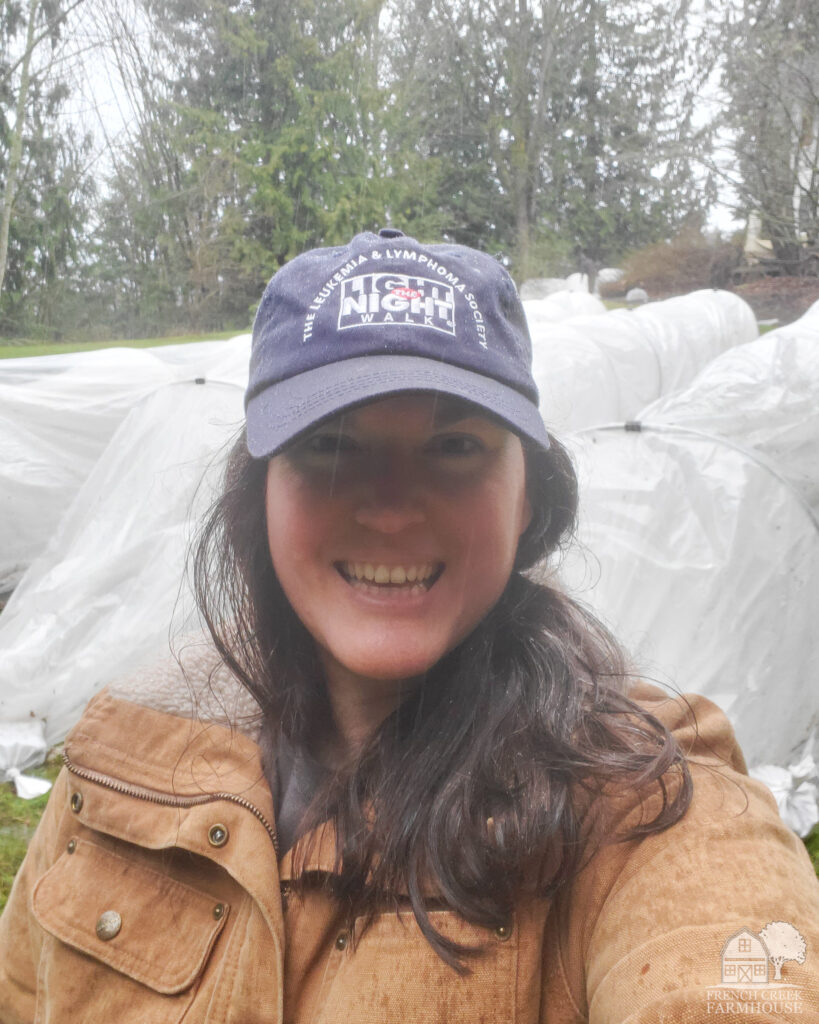
Thoughts From a Winter Gardener…
At this time of year, many gardeners are feeling a sense of sadness over the end of a flourishing season. Everything that they tended to and worked so hard to cultivate begins to die down, and the garden feels empty.
But fall and winter are not times of loss or yearning for fairer months. There’s a certain kind of magic in nurturing life during this season.
Winter vegetable gardening is a testament to resilience, an art that embodies both practicality and profound emotion.
When we grow our vegetables through the cold, we affirm the power of life’s endurance. It’s a reminder that, even in adversity, nature persists and offers sustenance.
{ Related: Going From Homestead to Farmstead }
Providing for your family with winter-grown produce is deeply personal. It’s the warmth of your family’s smiles as they savor the flavors of your garden in the dark of winter. It’s knowing that, regardless of the season, you can nourish your loved ones with fresh, homegrown goodness.
Winter gardening is a declaration of sustainability and self-sufficiency. It’s taking a step towards a future where we’re less dependent on distant sources for our food. It’s an act of empowerment, a statement that we can live in harmony with the environment and still meet our needs.
So, my fellow gardener, I urge you to embark on this winter gardening journey. It’s not just about nurturing vegetables; it’s about nurturing your spirit, your family, and the planet.
Let’s embrace the beauty of growing life in the cold, for it is in these moments that we truly learn what it means to be a steward of the earth.

Ready to dig in and grow something beautiful?
Get my Free Garden journal
Let’s be gardening buddies! Sign up to join our community, and get your free printable PDF Garden Journal. This is so good!

